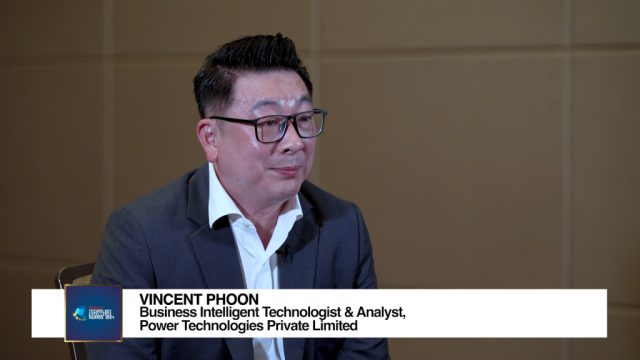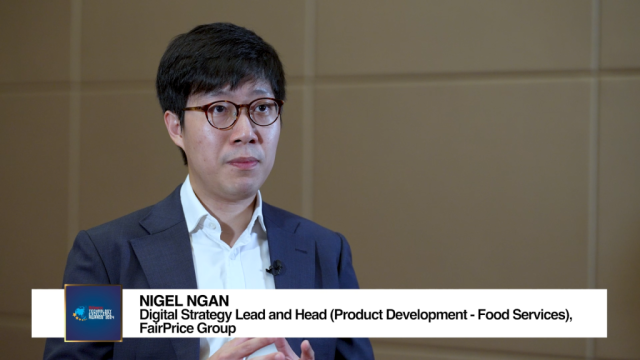
Water security, a “work-in-progress”: DPM
DPM Tharman Shanmugaratnam said cities around the world, including Singapore, will have to contend with issues in the context of urbanisation.
Here’s his speech during the opening of the Singapore International Water Week:
| I would like to extend a warm welcome to all guests and delegates. The fourth Singapore International Water Week has brought together a large group of world water leaders and experts, to learn and collaborate on sustainable water solutions in a changing urban environment. Singapore’s Journey towards Sustainable Water Singapore has always regarded water as a critical resource for our nation’s survival and growth. As a small city-state, we were driven by land scarcity to lay down careful plans for long-term land use and to protect water bodies and environment. We made major investments in a used water system that is separate from the storm water collection system. It kept our waterways clean, and has allowed us to collect, treat and reclaim used water on a large-scale to produce NEWater for re-use. With clean water bodies, it was possible to construct the Marina Barrage and create a reservoir in the city. The commissioning of the Punggol-Serangoon Reservoir Scheme yesterday increased our water catchment to two-thirds of Singapore’s area. What these have demonstrated is that safe harvesting of urban run-off is both possible and valuable – collecting every drop of rainwater in densely populated areas and conveying them to reservoirs for storage, and then extracting and treating for potable use. However, the journey towards water security will always be a “work-in-progress” for Singapore, as new challenges emerge in the urban environment. These challenges are not unique to Singapore. Cities around the world will have to contend with issues such as weather extremities in the context of urbanisation, increasing water demand and higher public expectations. I believe that collectively, the water community can surmount these challenges, and I would like to touch on three areas in which we can do better. Seek Opportunities in Change First, cities have to look at the challenges as opportunities to rejuvenate urban living. An example is the Delta Programme that the Netherlands has set up to combat a changing climate. They are acquiring land at strategic locations along the Rhine and Meuse rivers for the temporary storage of excess river discharge. However, the land that has been set aside serves a dual purpose: it not only acts as temporary floodplains, but doubles up as parkland for recreational and communal activities for most of the time, when it is dry. In Singapore, we have likewise sought to convert previously utilitarian drains and canals into beautiful and vibrant rivers and streams. These transformed waterways are also enhanced with features and technology to help clean the water and alleviate floods. Through this ‘Active, Beautiful, Clean (or ABC) Waters Programme’, the function and form of waterways have been integrated. Besides the drainage function, these waterways now beautify the urban surroundings. Sustain Investments in Technology A second imperative is to continue investing in technology and R&D aimed at developing sustainable water solutions - even if this means taking a long-term view, as the gestation periods can be long before the pay-offs to new technologies are realised. A growing number of cities around the world have recognised this and have begun incorporating R&D elements in their new urban developments. For example, Abu Dhabi has invested in the Masdar Institute of Science and Technology to find new energy and water solutions applicable globally and in particular, to Masdar City. In Singapore, the National Research Foundation (NRF) has committed some $330 million in 2006 to promote R&D in the water sector. To spearhead this growth, the Environment and Water Industry Programme Office was set up to translate breakthrough research ideas into sustainable water solutions. I am pleased to announce that the NRF will now allocate a further $140 million to top up this budget, raising it to a total of $470 million. We are hopeful that with these investments, we will achieve our goal of growing the value-added contribution from this sector from $0.5 billion in 2003 to $1.7 billion by 2015, and doubling jobs in the sector to 11,000 by then. So far, the projects funded under this initiative include those looking into domains like advanced membrane processes, bio-mimicry and low-energy seawater desalination. I encourage you to visit Singapore’s R&D Innovation booth in the Water Expo to learn more about these new technologies, and how they may be relevant to your needs. Work Across Boundaries The third imperative is closer collaboration between the public sector, academia and industry, aimed at developing pragmatic solutions and a thriving urban eco-system. An example of such partnerships is the Singapore-Delft Water Alliance established in 2007 by the National University of Singapore, Deltares (a consultancy company) and the PUB, Singapore’s national water agency. With the objective of developing sustainable solutions for the urban water cycle, the institute integrates the expertise and perspectives of the public sector, the industry and the academia to carry out impactful research. Its new Aquatic Science Centre will be launched on Wednesday. Besides conducting research of scientific and commercial value, the facility will also provide opportunity for the public to interact with scientists and understand the importance of their work. Another example is the Institute of Water Policy (or IWP) launched by Singapore’s Prime Minister Lee Hsien Loong in 2008, which has been engaging with the public sectors in several of our partners in Asia. This year, the IWP has enhanced these collaborations with the introduction of the Temasek Foundation Water Leadership Programme, the first multi-year water leadership programme to educate and train the next generation of water leaders in Asia. To date, there are 23 water research centers in Singapore set up by top industry players, such as Siemens Water Technologies, GE Water, Nitto Denko, Toray, Keppel Corporation and Hyflux. A substantial part of the research is done in close collaboration with our universities and public sector agencies. We continue to welcome companies to collaborate with us to develop, test-bed and bring new urban solutions to market. Conclusion: Working Across Boundaries Urban sustainability is a major challenge facing the world today. Yet, it presents an opportunity to revitalise city living when a long-term, integrated approach is adopted to address this challenge. By working across boundaries – of geography between cities, of technologies across sciences, and of knowledge across academia, the public sector and industry – we can potentially fast-track the development of solutions at a lower total cost, and make the challenge less daunting for everyone. I wish all participants of SIWW a fruitful week ahead. I and sure the renewed friendships and new partnerships that you strike will take us another step forward in building liveable and sustainable cities around the world. Thank you. |
























 Advertise
Advertise








